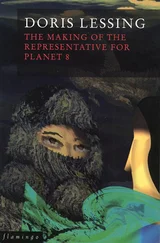In the summer of 1921 a wealthy seventeen-year-old American student, a recent graduate of the Ethical Culture School of New York, made his way to Joachimsthal on an amateur prospecting trip. Young Robert Oppenheimer had begun collecting minerals when his grandfather, who lived in Hanau, Germany, had given him a modest starter collection on a visit there when Robert was a small boy, before the Great War. He dated his interest in science from that time. “This was certainly at first a collector’s interest,” he told an interviewer late in life, “but it began to be also a bit of a scientist’s interest, not in historical problems of how rocks and minerals came to be, but really a fascination with crystals, their structure, birefringence, what you saw in polarized light, and all the canonical business.” The grandfather was “an unsuccessful businessman, born himself in a hovel, really, in an almost medieval German village, with a taste for scholarship.” 444Oppenheimer’s father had left Hanau for America at seventeen, in 1898, worked his way to ownership of a textile-importing company and prospered importing lining fabrics for men’s suits at a time when ready-made suits were replacing hand tailoring in the United States. The Oppenheimers—Julius; his beautiful and delicate wife Ella, artistically trained, from Baltimore; Robert, born April 22, 1904; and Frank, Robert’s sidekick brother, eight years younger—could afford to summer in Europe and frequently did so.
Julius and Ella Oppenheimer were people of dignity and some caution, nonpracticing Jews. They lived in a spacious apartment on Riverside Drive near 88th Street overlooking the Hudson River and kept a summer house at Bay Shore on Long Island. They dressed with tailored care, practiced cultivation, sheltered themselves and their children from real and imagined harm. Ella Oppenheimer’s congenitally unformed right hand, hidden always in a prosthetic glove, was not discussed, not even by the boys out of earshot among their friends. She was loving but formal: in her presence only her husband presumed to raise his voice. Julius Oppenheimer, according to one of Robert’s friends a great talker and social arguer, according to another was “desperately amiable, anxious to be agreeable,” but also essentially kind. 445, 446He belonged to Columbia University educator Felix Adler’s Society for Ethical Culture, of which Robert’s school was an extension, which declared that “man must assume responsibility for the direction of his life and destiny”: man, as opposed to God. Robert Oppenheimer remembered himself as “an unctuous, repulsively good little boy.” His childhood, he said, “did not prepare me for the fact that the world is full of cruel and bitter things. It gave me no normal, healthy way to be a bastard.” 447He was a frail child, frequently ill. For that reason, or because she had lost a middle son shortly after birth, his mother did not encourage him to run in the streets. He stayed home, collected minerals and at ten years of age wrote poems but still played with blocks.
He was already working up to science. A professional microscope was a childhood toy. He did laboratory experiments in the third grade, began keeping scientific notebooks in the fourth, began studying physics in the fifth, though for many years chemistry would interest him more. The curator of crystals at the American Museum of Natural History took him as a pupil. He lectured to the surprised and then delighted members of the New York Mineralogical Club when he was twelve—from the quality of his correspondence the membership had assumed he was an adult.
When he was fourteen, to get him out of doors and perhaps to help him find friends, his parents sent him to camp. He walked the trails of Camp Koenig looking for rocks and discoursing with the only friend he found on George Eliot, emboldened by Eliot’s conviction that cause and effect ruled human affairs. He was shy, awkward, unbearably precious and condescending and he did not fight back. He wrote his parents that he was glad to be at camp because he was learning the facts of life. The Oppenheimers came running. When the camp director cracked down on dirty jokes, the other boys, the ones who called Robert “Cutie,” traced the censorship to him and hauled him off to the camp icehouse, stripped him bare, beat him up—“tortured him,” his friend says—painted his genitals and buttocks green and locked him away naked for the night. 448Responsibly he held out to the end of camp but never went back. “Still a little boy,” another childhood friend, a girl he liked more than she knew, remembers him at fifteen; “…very frail, very pink-cheeked, very shy, and very brilliant of course. Very quickly everybody admitted that he was different from all the others and very superior. As far as studies were concerned he was good in everything…. Aside from that he was physically—you can’t say clumsy exactly—he was rather undeveloped, not in the way he behaved but the way he went about, the way he walked, the way he sat. There was something strangely childish about him.” 449
He graduated as Ethical Culture’s valedictorian in February 1921. In April he underwent surgery for appendicitis. Recovered from that, he traveled with his family to Europe and off on his side trip to Joachimsthal. Somewhere along the way he “came down with a heavy, almost fatal case of trench dysentery.” He was supposed to enter Harvard in September, but “I was sick abed—in Europe, actually, at the time.” 450Severe colitis following the bout of dysentery laid him low for months. He spent the winter in the family apartment in New York.
To round off Robert’s convalescence and toughen him up, his father arranged for a favorite English teacher at Ethical Culture, a warm, supportive Harvard graduate named Herbert Smith, to take him out West for the summer. Robert was then eighteen, his face still boyish but steadied by arresting blue-gray eyes. He was six feet tall, on an extremely narrow frame; he never in his life weighed more than 125 pounds and at times of illness or stress could waste to 115. Smith guided his charge to a dude ranch, Los Piños, in the Sangre de Cristo Mountains northeast of Santa Fe, and Robert chowed down, chopped wood, learned to ride horses and live in rain and weather.
A highlight of the summer was a pack trip. It started in Frijoles, a village within sheer, pueblo-carved Cañon de los Frijoles across the Rio Grande from the Sangre de Cristos, and ascended the canyons and mesas of the Pajarito Plateau up to the Valle Grande of the vast Jemez Caldera above 10,000 feet. The Jemez Caldera is a bowl-shaped volcanic crater twelve miles across with a grassy basin inside 3,500 feet below the rim, the basin divided by mountainous extrusions of lava into several high valleys. It is a million years old and one of the largest calderas in the world, visible even from the moon. Northward four miles from the Cañon de los Frijoles a parallel canyon took its Spanish name from the cottonwoods that shaded its washes: Los Alamos. Young Robert Oppenheimer first approached it in the summer of 1922.
Like Eastern semi-invalids in frontier days, Oppenheimer’s encounter with wilderness, freeing him from overcivilized restraints, was decisive, a healing of faith. From an ill and perhaps hypochondriac boy he weathered across a vigorous summer to a physically confident young man. He arrived at Harvard tanned and fit, his body at least in shape.
At Harvard he imagined himself a Goth coming into Rome. 451“He intellectually looted the place,” a classmate says. 452He routinely took six courses for credit—the requirement was five—and audited four more. Nor were they easy courses. He was majoring in chemistry, but a typical year might include four semesters of chemistry, two of French literature, two of mathematics, one of philosophy and three of physics, these only the courses credited. 453He read on his own as well, studied languages, found occasional weekends for sailing the 27-foot sloop his father had given him or for allnight hikes with friends, wrote short stories and poetry when the spirit moved him but generally shied from extracurricular activities and groups. Nor did he date; he was still unformed enough to brave no more than worshiping older women from afar. He judged later that “although I liked to work, I spread myself very thin and got by with murder.” 454The murder he got by with resulted in a transcript solid with A’s sprinkled with B’s; he graduated summa cum laude in three years.
Читать дальше












